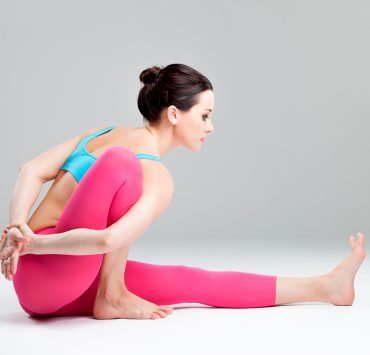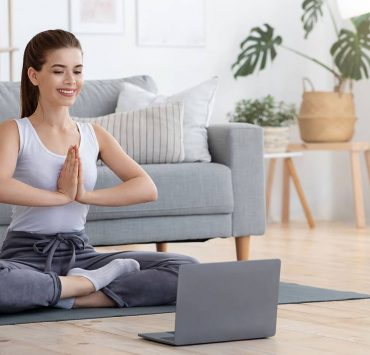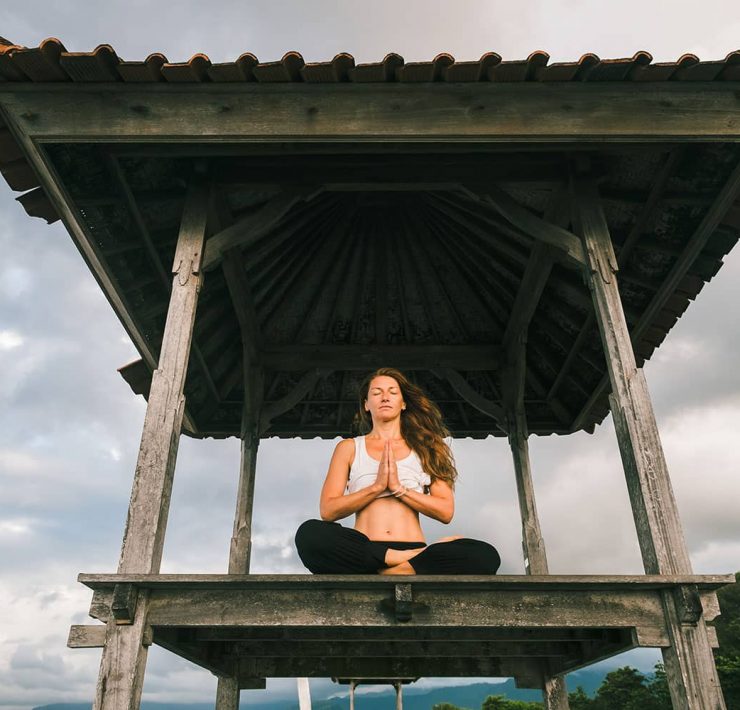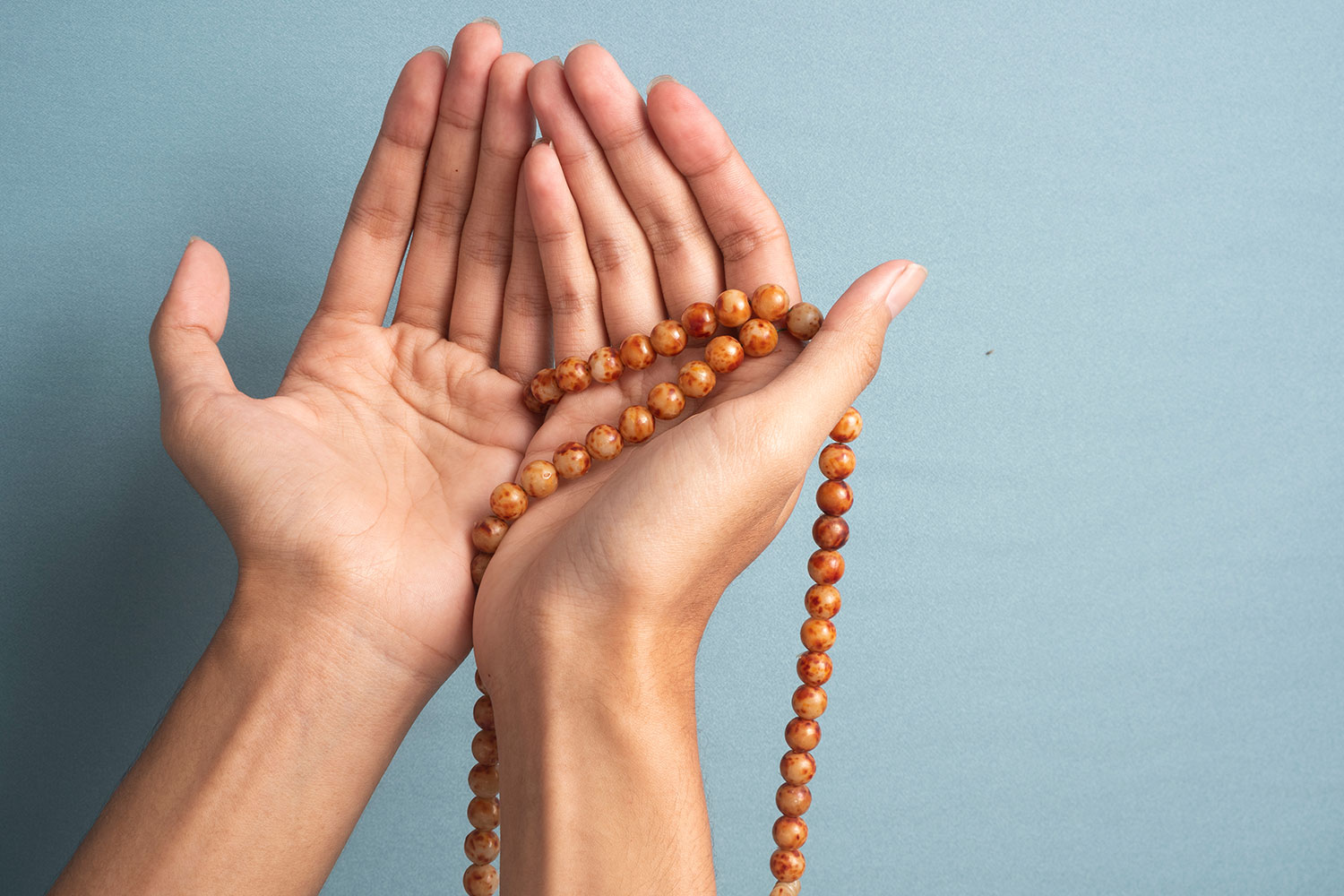
A graduate of Arizona State University, Nicole Baker is a…
While malas (japa mala) are often seen on wrists or necks in today’s modern culture as a fashion statement, mala beads are meant to be used in meditation and prayer. The tradition of beads for prayer or contemplation has existed throughout the world in many traditions or religions for thousands of years. Sometimes referred to as worry beads, they are used to keep track during meditation for chanting, mantra, prayers, or names a deity. Malas are used as tools to help focus the meditator’s awareness and concentration while slowing respiration and encouraging well being. There are multiple lengths of the mala, although we commonly see the long ones with 108 beads. They are made from a wide range of materials such as seeds, wooden beads, rocks, or gemstones.
History of Mala Beads
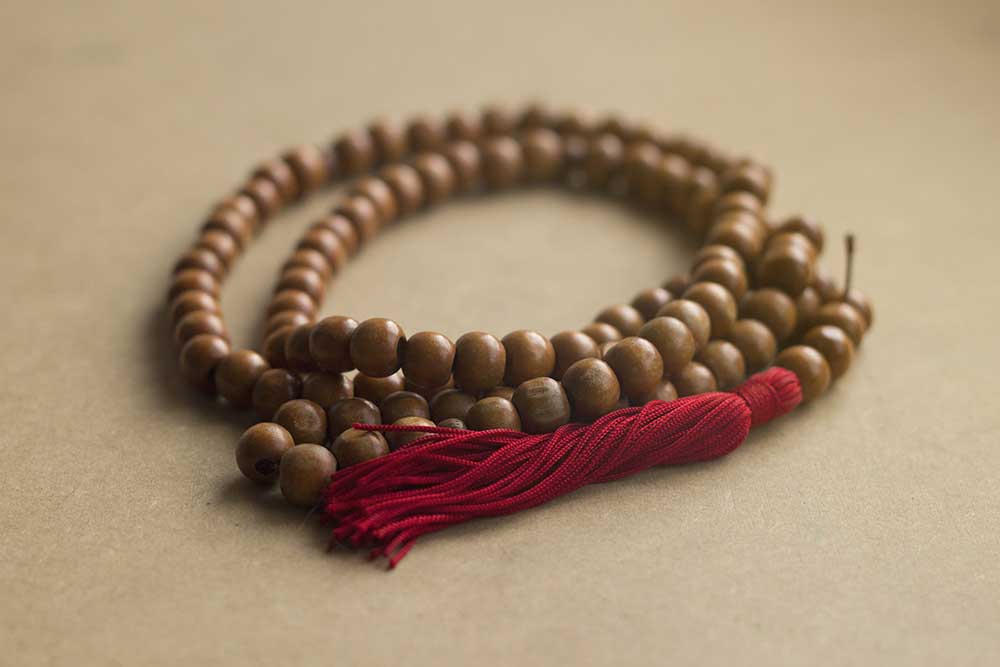
The exact origin of mala is unknown and multiple religions have utilized them in prayer for centuries. Some scholars believe that they originated in India from the Hindus and later made its way into Buddhism. Gradually it was adapted to different religions as various tradesmen who traveled to India brought them to the region.
In Hinduism, malas are illustrated in scriptures dating back around 185 BC. Brahma is the creator of all including other deities including Shiva, the destroyer, and Vishnu the preserver. 108 is a sacred number in the Hindu religion as it represents the number of Brahma’s names. Those who favor Shiva may use malas that are made from rudraksha seeds, while those who prefer Vishnu may use mals made from the tulsi plant.
According to Buddhist legend, during an intense time of suffering due to famine and disease, King Vaiduyna asked the Buddha for help. The worry and suffering became too much and he asked Buddha to teach him one main point of the dharma that he could teach his people to help reduce the distress. The Buddha told him to make a circular string consisting of 108 bodhi seeds and to repeat the following: ‘I take refuge in the Buddha. I take refuge in the dharma. I take refuge in the Sangha.’ Count one bead with each recitation of these three.” The king was able to teach this to his people and relieved their suffering.
Catholics adopted the beads commonly referred to as the rosary, although it was mistranslated from the Sankrit word japamala into rose beads when they confused the japa for jap which is the Latin word for rose. They were adopted and are used for the Hail Mary prayer.
Benefits of Mala Beads
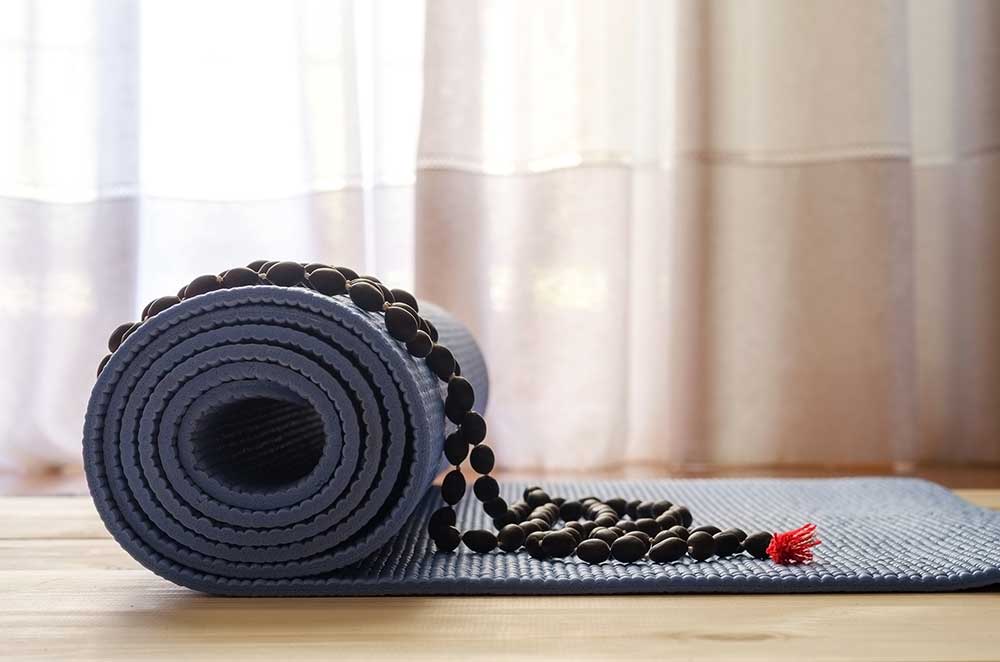
Many contemplative practices use repetition to help aid the practitioner during meditation. It can be difficult to keep track of how long you are practicing. Malas help meditators to increase focus during their practice. Not only is there repetition but the interaction between the hand and the bead helps aid in concentration. For those who would like to repeat their mantra a specific number of times, malas help count the mantra without needing to internally keep track. Visually the color of the beads can affect moods or balance chakras. Additionally, the stones themselves may have their own healing properties.
Mala Bead Structure
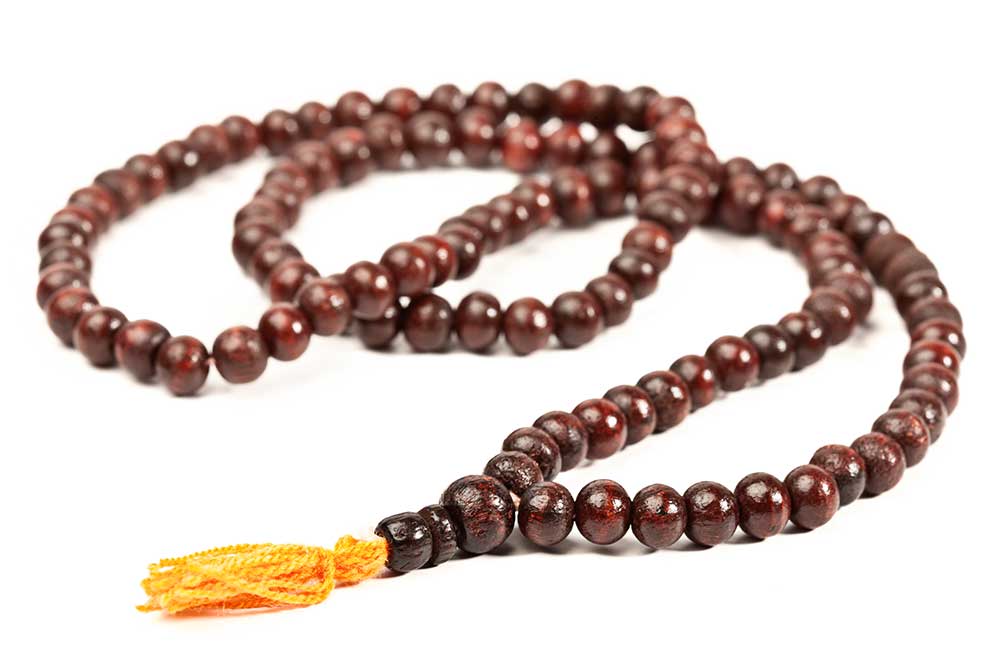
There are different lengths for malas. Long malas consist of 108 beads strung together and an additional guru bead typically used for meditation or prayer. This special bead is meant to represent the relationship between the student and either their guru or spiritual teacher. Additionally, they will often include spacer beads which divide the mala into 4 sections of 27 beads. Some garlands also have a tassel the is a symbol for power and protection.
Malas are unique and can serve individuals differently. They can be made of up different beads, seeds, or gemstones. Sometimes the bead type is insignificant or used for fashionable purposes but some are chosen specifically for the qualities of the gemstone that was picked. In various traditions, gemstones have different properties that can help to bring people into balance.
Here are some sample stones and their purposes:
- Amber: Amber is made from ancient petrified pine tree resin. It is said to help lift heavy burdens and absorbs impurities of the body and spirit. It helps dispel negative energy.
- Amethyst: Representing spirituality and contentment, amethyst helps balance intellect, emotions, and the physical body.
- Blue Opal: These multiple colored stones are helpful if you have had challenges speaking your truth. Associated with the throat chakra, it will assist you in stateing your needs clearly without stepping on others in the process. This stone is also ideal for those who have lacked self-esteem or confidence.
- Granite: If relationships have been a challenge, granite is a possible option. It helps create balance, cooperation, and diplomacy.
- Hematite: Obstacles occur at many points in our lives. If you find yourself in a position where you are stuck and unable to overcome them, a hematite mala can help. Hematite assists in reaching your full potential and manifesting your needs.
- Jasper: If you need more balance in your life, a mala made from Jasper is an excellent choice. This stone will help protect you from negativity and is an excellent option for anyone going through a transitional period in their life.
- Lava: For those who feel like they need more strength, the lava stone is an ideal stone for anyone dealing with a personal struggle they feel ill-equipped to handle or struggling with self-judgment.
- Moonstone: Moonstone encourages reflection, introspection, and balance as well as helping one with emotional changes.
- Quartz: If you are trying to connect to your higher self, quartz may be a good option for you. Quartz helps energize the body and thoughts. It aids in cultivating wisdom, focus, and mental clarity.
- Rose Quartz: When the heart is heavy, rose quartz might be a good option for a mala. Rose quartz helps create harmony and assists in the formation of self-love during challenging situations. It can also help in giving and receiving lobe.
- Turquoise: This teal-green stone is ideal for those needing protection. It also helps align the chakras.
How to Choose a Mala Bead
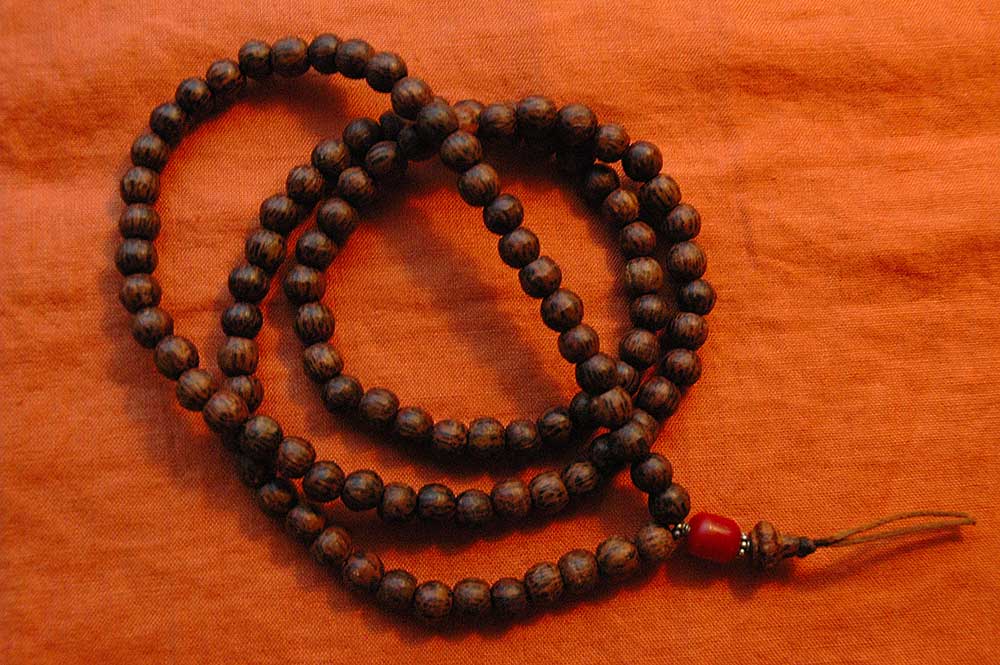
Since there is such a variety of beads, choosing a mala can be challenging. When deciding there are several things to consider:
Your Intention and Goals
Often malas are comprised of materials that have their own significance that can aid in challenges you may be experiencing. By tuning in and discovering what struggles you are facing it may help you pick a mala that made of stones, seeds, or gemstones that will help with those affiliations.
Physical Aesthetics and Chakras
Colors and aesthetics have an important role on our mood. By choosing colors that appeal to you, it is possible to lift your mode. Also wearing specific colors may have healing properties according to chakra therapy. If focusing on the chakras, stating the bija mantra of the specific chakra can further enhance the meditation practice.
- Red: Malas that are red may help with imbalances in the root chakra or Muladhara. This chakra is responsible for our most basic needs such as security and sex. Carnelian Malas can be useful. Mantras for chanting can include the bija mantra Lam.
- Orange: Orange can assist with the sacral chakra or Svadhisthana linked to our creativity and pleasure. Citrine could be a possible option for stones. The bija mantra for this chakra is Vam.
- Yellow: Stones that are yellow can awaken the solar plexus or Manipura chakra. A bright vibrant turmeric mala can help create balance in this chakra. Ram is the bija mantra for the third chakra.
- Green: Malas composed of green stones can help balance the Anahata or heart chakra, responsible for love, growth, and harmony. Jade or Jasper can help with deficiencies in Anahata. Yam can be helpful in chanting around the mala.
- Blue: If you need more peace, focusing on the throat chakra or Vissudha, can help with communication, confidence, and faith. Practicing a mala that has blue stones can help balance the throat chakra. Possible stones can include Apatite or Agate. Chanting Ham helps balance the throat chakra.
- Purple: Representing the third eye chakra or Ajna, purple represents intuition and insight. Amethyst or tourmaline are possible options to increase intuition. Aum or Om are the bija mantras for the third eye.
- White: The crown chakra or Sahasrara connects us with the divine and represents purity. Pearls or moonstone can help awaken the crown chakra. Om, Ah, or Soham with this chakra while some say silence is also acceptable.
Price and Budget
Malas can greatly vary in price depending on where you purchase it and what it is made out of. Malas are used as a tool in meditation but is not required to practice meditation either. Finding a mala that is within your price range so you can start using it with your meditation practice will be more effective than waiting months to save up for that “perfect” one. You can always start with a mala within your budget and complete your practices while you save up for that perfect mala. You may even find that after practicing on a more budget-friendly option, your needs and mantra eventually change.
Once you have chosen your mala, they should be treated with care as they are considered to be charged with energy. Keep malas off of the floor. In Buddhist tradition, if it accidentally lands on the floor, it should be placed against the crown of the head and the Om Ah Hum should be recited three times. They are often stored in bags when not in use.
How to Make Mala Beads
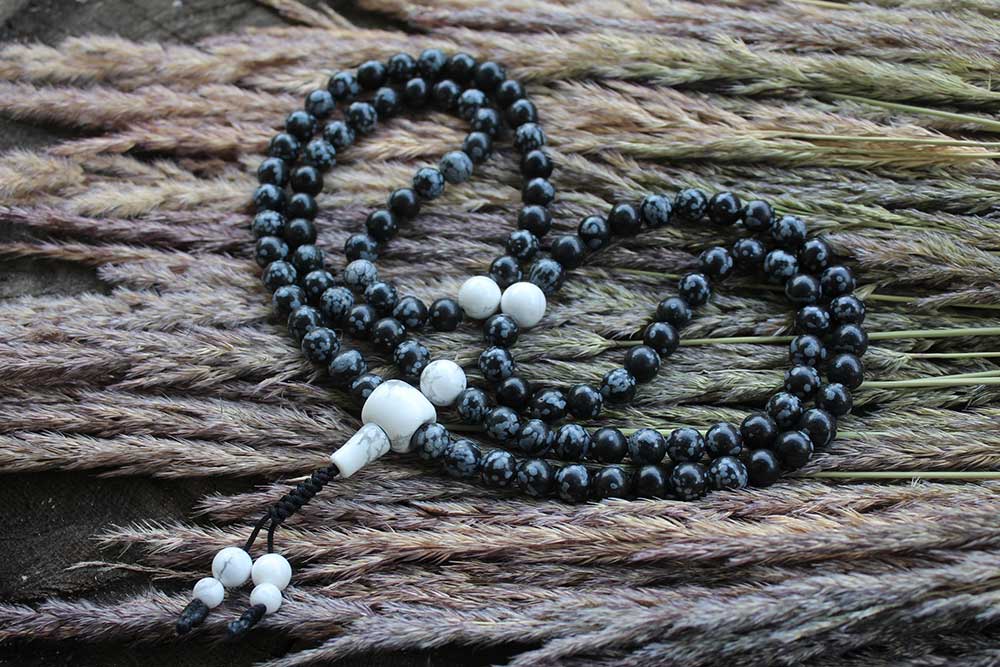
As you search for mala beads online or in person, you may find that you would like to make your own instead. It might also be more economical. Making your own mala is relatively easy. You will need scissors, stringing material, beads, a guru bead, and an optional tassel or spacer beads. The suggested bead size is 6mm or 8mm sized beads.
Steps to make your own mala.
- Cut a 5-foot length cord.
- Make a know on one end, large enough so the beads cannot slip through.
- String your beads. If you would like to add a spacer, they are inserted after the 27th bead.
- After all 108 beads are strung together, tie the ends together with a simple know.
- Add your tassel if desired.
- Cut off any extra cord.
Meditation with Mala beads
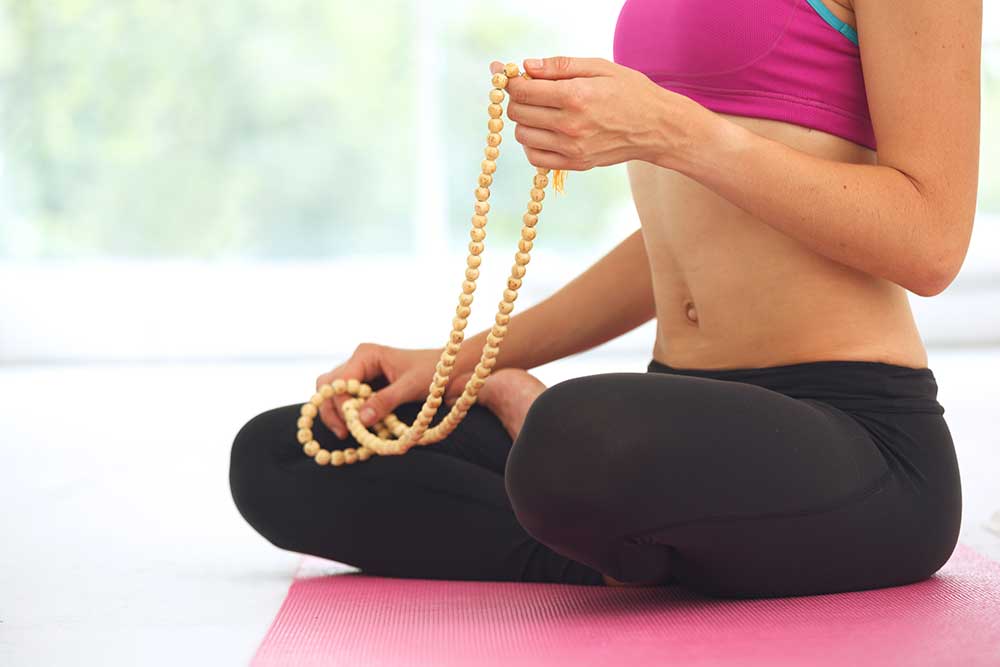
During meditation, the location of where you practice is insignificant. While it’s suggested to come into a seated meditation posture, you can practice in any posture that will keep you alert and awake. Standing and lying down is fine. As you handle the mala, hold it with care and respect.
Mantra Meditation
- Identify or create a mantra that has significance for you. It could be a bija mantra associated with the chakras or a statement that has significance for you.
- Hold the mala in your left hand. Place it between your index and middle fingers.
- Place your thumb on the guru bead.
- Either silently or aloud, state your mantra.
- Using your thumb, move the mala towards you and place your thumb on the next bead.
- Continue repeating your mantra and moving the beads until you reach the guru bead again
- Either complete your meditation or you can circle back around the mala.
It could be helpful to journal about the experience after completing it. Write down any thoughts, emotions, or body sensations that occurred during the practice.
Conclusion
Malas can be a powerful tool to aid in meditation and create more balance in our lives. While the stones can help create more balance in your mind and body, simply starting a practice with any mala bead can have a profound impact on your spirit.
What's Your Reaction?
A graduate of Arizona State University, Nicole Baker is a force to be reckoned with in the realm of health and wellness. She studied behavioral health, which propelled her desire to live holistically and share her knowledge with other like-minded individuals.






